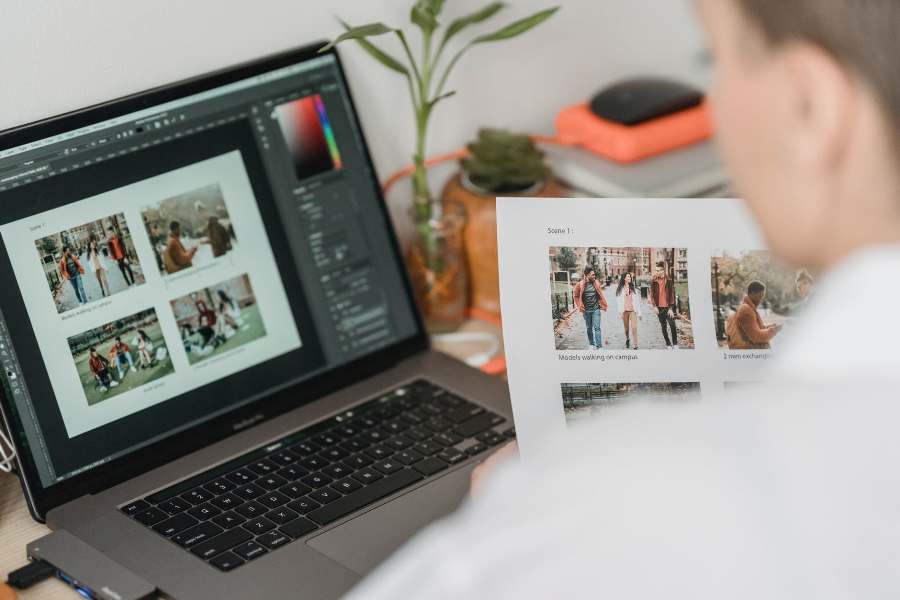

- #Learning photoshop portrait retouching notes how to
- #Learning photoshop portrait retouching notes software
You can do that in Photoshop too of course, so it depends on what you want to do as to which program is the best. When you have done any pixel edits you can take the file back into Lightroom so that all file versions are in the same place, and so you can do anything you want with the file without having to create five different copies or upload them separately to different sites.įrom Lightroom, you can apply output sharpening, save to photo sharing sites, export for prints, share on Facebook or Instagram, create photo books, slideshows, web galleries, collages and so on. Step Five: Output Sharpening, Exporting, Sharing, Creating - USE LIGHTROOM Sure, it can do some simple pixel tweaks, but nowhere near what you can do in Photoshop. This is unlike Lightroom, where you can really only ENHANCE what it there already. like replacing the sky, or taking away elements, such as my love handles and double chin :-) So pixel editing is when you CHANGE reality, either by adding in elements that weren't really there. Using other types of overlays such as rain, snow etcĪdd whimiscal elements such as leaves or bubbles Slimming someone down, removing eye bags, or slimming down the noseĬombining images or parts of images (Composites) The main time you really need to take your image into Photoshop is when you want to do pixel editing. Pixel editing is just as it sounds, it is when you want to change the actual pixels in an image. Step Four: Changing Reality - USE PHOTOSHOP Quite aside from the fact is it all slider based in Lightroom, which is more intuitive, with Photoshop you should create separate layers for each edit (so one for exposure, one for white balance and so on) which is just far too time consuming when you are editing multiple images. The second reason is because is just so much freaking easier to do most edits in Lightroom than Photoshop! Once you have your images sorted, it's time to edit.Īny major changes such as exposure, white balance, noise reduction, lens correction, global colour toning, tonal contrast and secondary contrast and so on should be done in Lightroom.įirstly, it's non destructive, which means that you can make as many changes as you wish to your image but your original file is not affected, and you can go back to any point in your edit at any time with complete ease, and you never have to worry about accidentally overwriting the file, or flattening your layers.
#Learning photoshop portrait retouching notes software
This is where Lightroom positively excels over any other software out there, Photoshop included, so be sure to take advantage of it so you can feel more in control about where all your images are! This means you can then go on to manage your images within Lightroom - for example, rating, flagging, key wording, colour coding and sorting into collections. You always want to import your images using Lightroom, so that you can automatically add these images to your catalog at the same time. Step One: Importing your images - USE LIGHTROOM Let's break that figure down and see when we should use what program in a typical workflow. To give you an idea of the time you should spend in Lightroom, for the vast majority of lifestyle / portrait / family / documentary / landscape photographers, you should be doing around 90% of your edits within Lightroom - sometimes 80%, when you have a fair bit of pixel editing to do, and nearly 95% if you are more documentary style. This meant I could edit much more quickly, and work more efficiently, as although I was still using Photoshop, I could use Lightroom for the bulk of the edits, and Photoshop for that all important fine-tuning.

I set about teaching myself how I could transfer my Photoshop editing skills to Lightroom, and although it took a little time, when I did, I was golden! I could then do 90% of my edits within Lightroom, only taking images into Photoshop when I needed to, or when I wanted to add a little extra magic to my photos. This was incredibly time consuming, and didn't help me streamline my editing process one iota - in fact, it just just made it take even longer! I switched to Lightroom, and after a few (i.e three) false starts, and a steep and frustrating learning curve, I began to seriously LOVE it for image management.īut apart from some basic tweaks, I was still taking the majority of my images into Photoshop for editing. When it got to the point that sometimes I wouldn't shoot because I had a whole backlog of photos to contend with first, I knew something had to change :) My photos looked great, but the problem was that it took FAR too long for me to edit them, and as a result I was feeling bogged down with editing, and just generally overwhelmed!

#Learning photoshop portrait retouching notes how to
When I first started out in photography, I used Photoshop exclusively for editing, and that is where I first learnt how to truly edit my images.


 0 kommentar(er)
0 kommentar(er)
